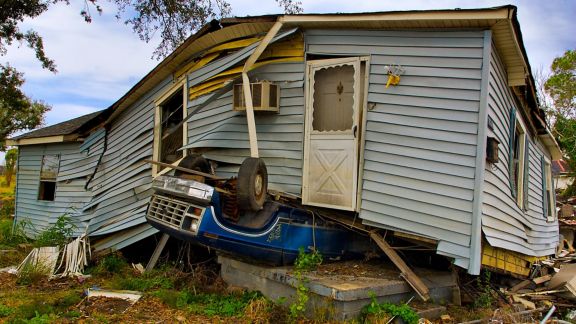Beyond Quick Fixes: Designing Effective & Engaging Technical Assistance

Author
Senior Research Scientist
August 2025
NORC’s community-centered approach to training and technical assistance helps organizations solve pressing problems.
In my experience, technical assistance is often like remodeling a bathroom. You start with a demolition plan, but you don’t really know how things are going to go until you start knocking down walls. Maybe there’s perfect plumbing, maybe there are crumbling pipes, or maybe the electrical wiring needs a complete overhaul. You have to be prepared for anything.
That’s exactly how effective training and technical assistance (TA) at NORC happens. Unlike other research methods that follow a predetermined sequence of steps, TA requires sitting in the uncertainty of how a project will unfold. I often ask myself, “What will we find when we dig into the work with the TA recipient?”
Identifying the TA Need
When approaching a bathroom remodel, you may think you know what you need. You want to replace the lighting—how complicated could that be? But when you start talking about why you want new lighting, you realize what you really want is a bigger window to get more natural light. If you had installed a new overhead light, you wouldn’t have been happy with the end result.
The same thing can happen when planning TA. When organizations initially seek TA support, they often think they know what their problem is. A community clinic might think it needs help designing a campaign to increase HIV testing rates. But when we start our needs assessment—talking to administrators, frontline staff, and the people the program serves—we may discover the real issue is the clinic isn’t open when their clients get off from work. No amount of marketing and outreach will solve a structural barrier like that.
Addressing the TA Challenge
The curiosity and investigative skills NORC brings to a TA project mean we don’t arrive with predetermined solutions. Instead, we combine three critical elements: community engagement, capacity strengthening through connection with subject matter experts, and methodological rigor.
Our community engagement approach, in particular, really sets NORC apart. We don’t just ask program participants what they think; we involve them in every step of the TA process, from identifying problems to designing solutions.
This benefits both parties; by treating communities with respect and using culturally responsive methods, we improve our data quality. When communities are genuinely engaged, we get more complete and nuanced insights that lead to solutions people will actually use. Going back to the bathroom analogy: you wouldn’t want the plumber and the contractor to make all of the decisions about your space! End-user engagement is essential to success.
This approach to TA was important in our evaluation of the EmPWR program, which engaged residents of domestic violence (DV) shelters in the design of the shelters’ communal spaces. We could have approached the shelter residents “just” as domestic violence survivors, inadvertently limiting our conversations to their experiences with trauma.
Instead, we listened broadly and carefully, and they told us they wanted to be interviewed as shelter residents—whole people sharing their residential experience. That subtle shift in framing completely changed how they engaged with us and the quality of data we collected.
Building Solutions that Last
The best TA partnerships focus on capacity strengthening, not staff augmentation. Going back to the bathroom analogy: if I demo the wall for you, you will never learn how to demo a wall yourself. But if I show you how to do it, you’ve gained a skill that lasts long after I’m gone. It’s much easier to let someone do the work for you, but then maintaining the work and scaling up becomes incredibly costly and inefficient over time.
This is the approach we take with tools such as the Implementation Manual on EmPWR. We designed a toolkit with DV shelter staff in mind. The toolkit is adaptable, flexible, simple, and straightforward so busy shelter staff do not have to weed through overly academic, complex language to get the information they need.
What excites me most is to be of service to a community. Program directors usually know something isn’t working, but they often lack the tools, time, or expertise to determine what needs to change. I work to help people feel less alone in their work, more connected to other professionals, and like they don’t have to shoulder the burden of solving all the problems themselves.
At NORC, our TA experts can serve as a resource hub, connecting our clients to the right subject matter experts, methodologists, and specialists they need. As an organization with experts across subjects ranging from health to economics to data science—and ties to University of Chicago researchers—we have access to colleagues across disciplines who can quickly mobilize to tackle different aspects of a challenge.
Speaking of multi-disciplinary colleagues, our TA team is comprised of experts in adult learning theory, instructional design, virtual engagement, and content development, including Certified Health Education Specialists (CHES). We use a systematic, six-step framework to approach and manage TA relationships, ensuring thorough, thoughtful, and meaningful TA products such as 1:1 training and technical assistance, train-the-trainer, learning collaboratives, communities of practice, and participatory data parties and sensemaking.
You’re not getting a random collection of consultants; you’re getting a consistent standard of excellence and efficiency from colleagues who already know how to work together, just like a finely coordinated group of expert electricians, plumbers, tile installers, and carpenters overhauling a bathroom.
Let us know if you have a TA problem, idea, or question—we would love to work with you to solve it.
Main Takeaways
- Effective TA requires genuine listening and collaboration with TA recipients to strengthen capacity.
- Centering TA recipients (especially those with lived experience) throughout the whole process is essential to success.
- Strengthening capacity by helping folks learn to do the “install” themselves ensures they don’t need to rely on TA in the future.
Suggested Citation
Marbach, A. (2025, August 25). Beyond Quick Fixes: Designing Effective and Engaging Technical Assistance. [Web blog post]. NORC at the University of Chicago. Retrieved from www.norc.org.







